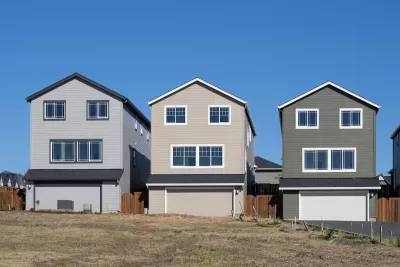We don’t often make a clear distinction between investors and speculators, which makes it harder to identify harmful behavior — and to find solutions for it.

Shelterforces' Miriam Axel-Lute makes a compelling case for using more precise language when discussing private actors in housing markets. While these terms are often used interchangeably, she argues there's a crucial distinction:
True housing investors put capital and work into improving properties, accept genuine risk, and seek reasonable returns over time. Think of someone who rehabilitates a deteriorating property and rents or sells it at fair market rates.
Speculators, by contrast, aim to profit purely from external market forces - like holding vacant land until nearby transit improvements boost its value, or buying up rental properties betting that housing shortages will drive up rents. They extract value without contributing meaningful improvements.
This distinction matters for policy discussions. As cities grapple with corporate purchases of single-family homes and vacant property speculation, being precise about different actors' roles and impacts can lead to better targeted solutions.
The piece also suggests that even individual homeownership often contains elements of speculation, since appreciation typically comes from location and market forces rather than property improvements. This insight helps explain why shared-equity homeownership models, which limit windfall gains, may be both fair and effective.
Read the full article for an exploration of how language shapes our understanding of housing market dynamics.
What do you think about this framework for distinguishing housing market actors? Does it align with what you observe in your community?
FULL STORY: What’s in a Name? Investors vs. Speculators

Alabama: Trump Terminates Settlements for Black Communities Harmed By Raw Sewage
Trump deemed the landmark civil rights agreement “illegal DEI and environmental justice policy.”

Planetizen Federal Action Tracker
A weekly monitor of how Trump’s orders and actions are impacting planners and planning in America.

The 120 Year Old Tiny Home Villages That Sheltered San Francisco’s Earthquake Refugees
More than a century ago, San Francisco mobilized to house thousands of residents displaced by the 1906 earthquake. Could their strategy offer a model for the present?

Opinion: California’s SB 79 Would Improve Housing Affordability and Transit Access
A proposed bill would legalize transit-oriented development statewide.

Record Temperatures Prompt Push for Environmental Justice Bills
Nevada legislators are proposing laws that would mandate heat mitigation measures to protect residents from the impacts of extreme heat.

Downtown Pittsburgh Set to Gain 1,300 New Housing Units
Pittsburgh’s office buildings, many of which date back to the early 20th century, are prime candidates for conversion to housing.
Urban Design for Planners 1: Software Tools
This six-course series explores essential urban design concepts using open source software and equips planners with the tools they need to participate fully in the urban design process.
Planning for Universal Design
Learn the tools for implementing Universal Design in planning regulations.
Clanton & Associates, Inc.
Jessamine County Fiscal Court
Institute for Housing and Urban Development Studies (IHS)
City of Grandview
Harvard GSD Executive Education
Toledo-Lucas County Plan Commissions
Salt Lake City
NYU Wagner Graduate School of Public Service



























